You can shop these items and more at Luna & Curious.
Introducing: Stranger London (and a purchase)
Photo Diary: The Underground Cookery School
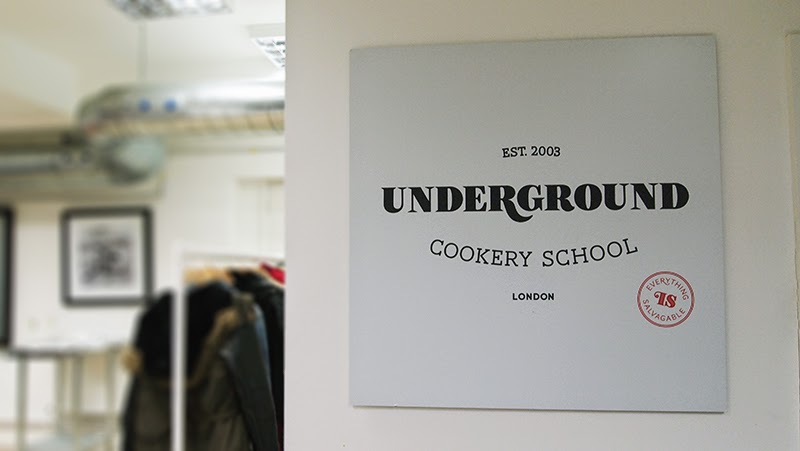
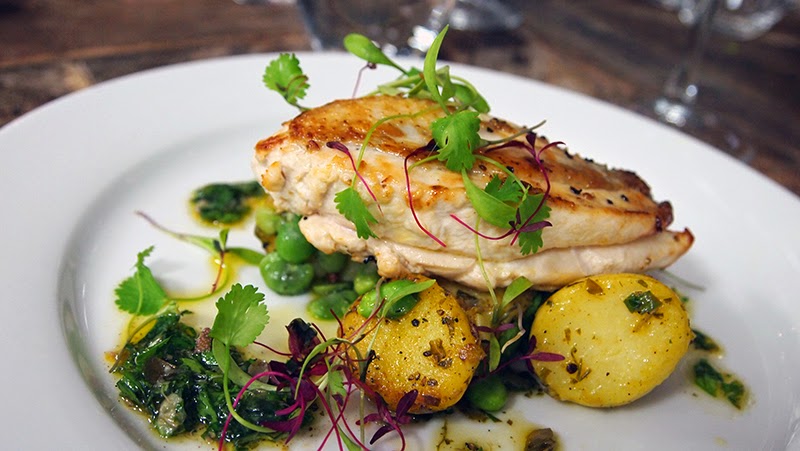
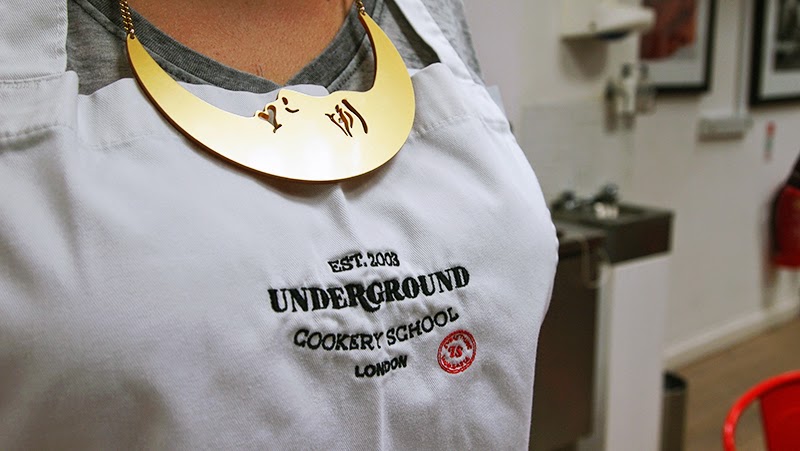
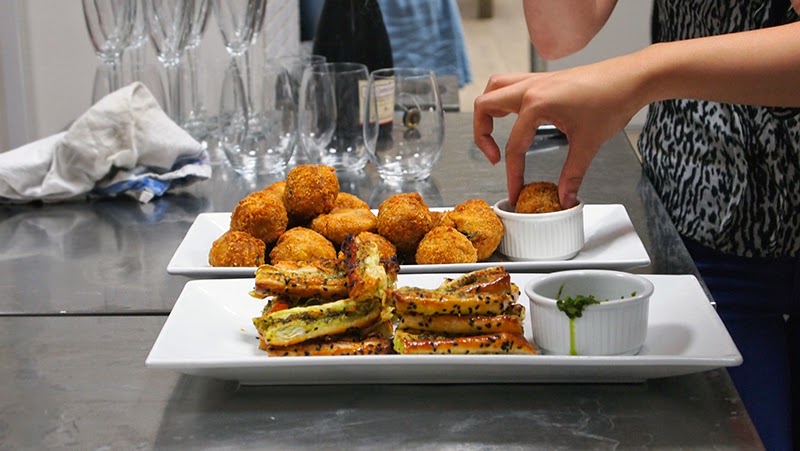
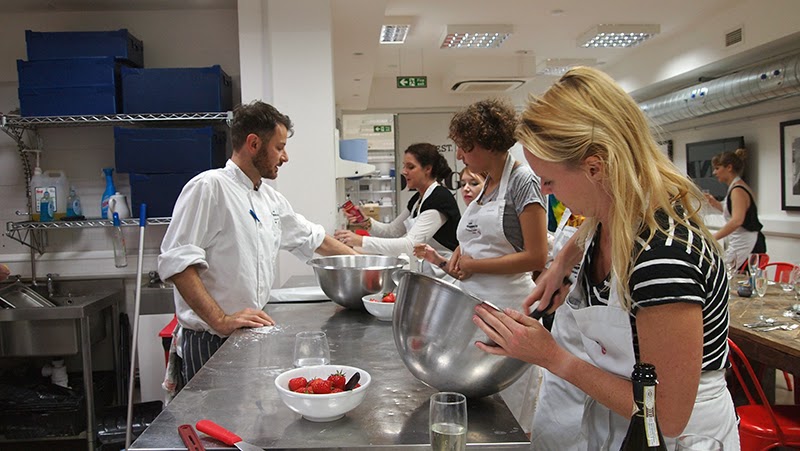
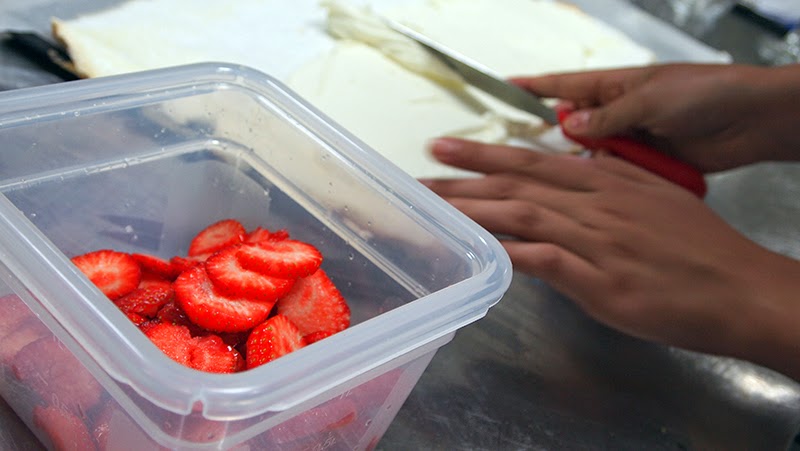
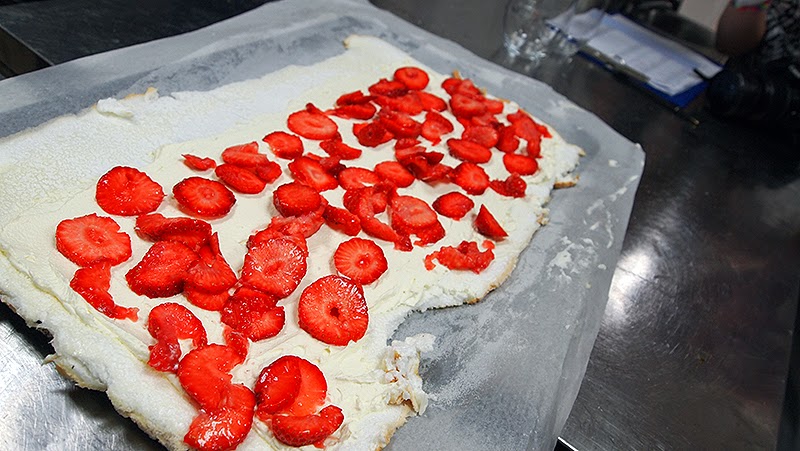
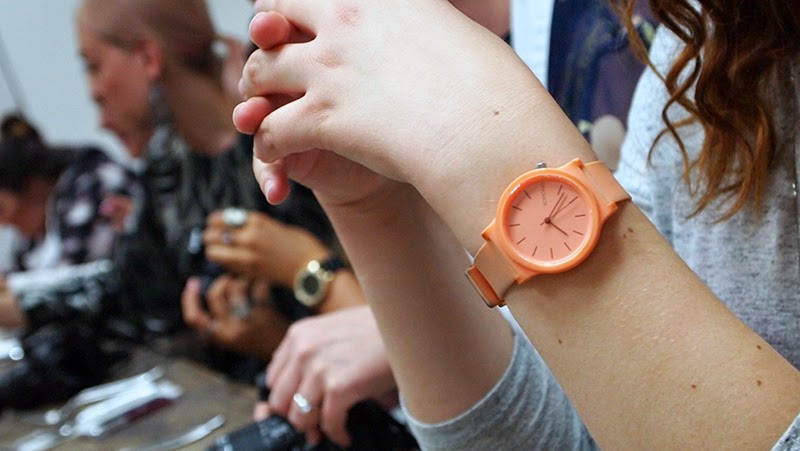
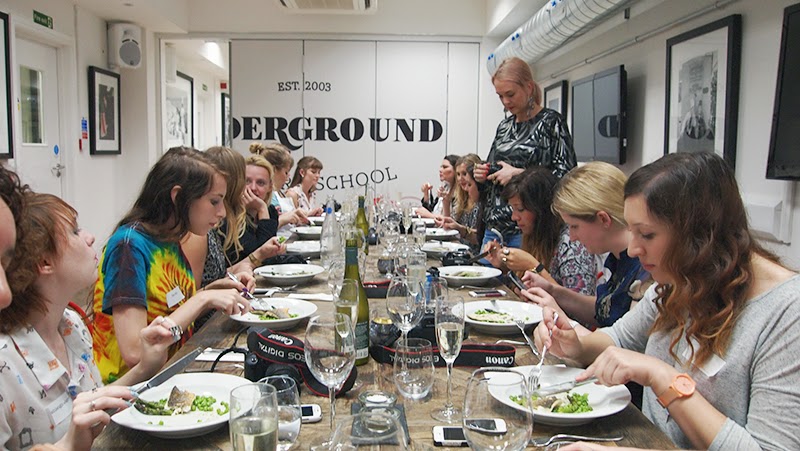
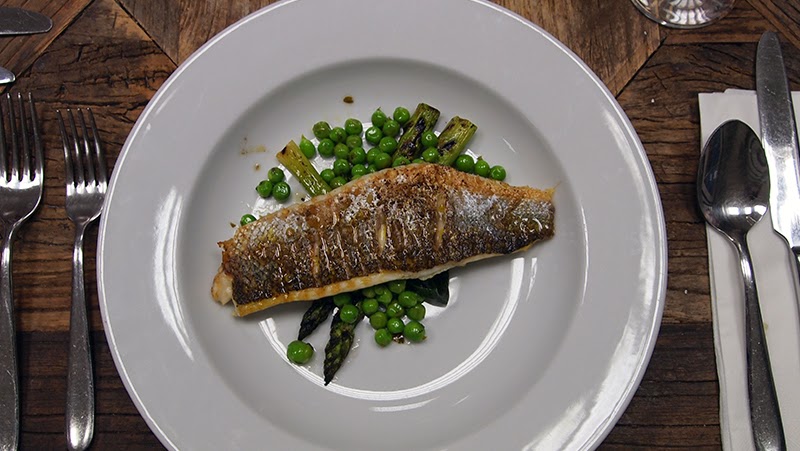
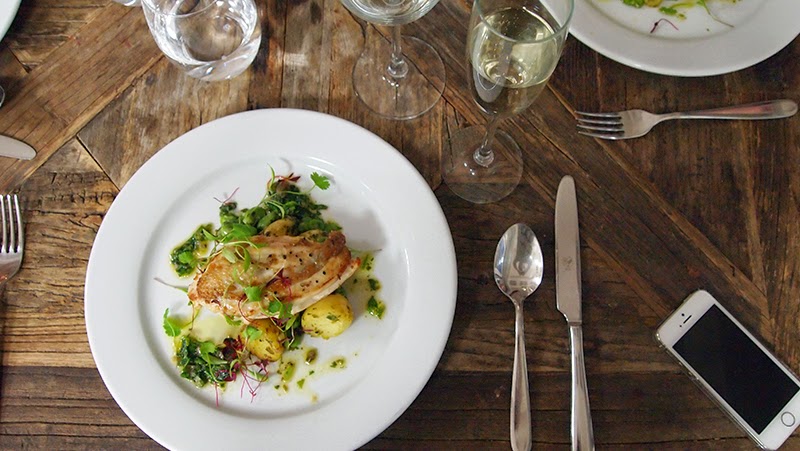
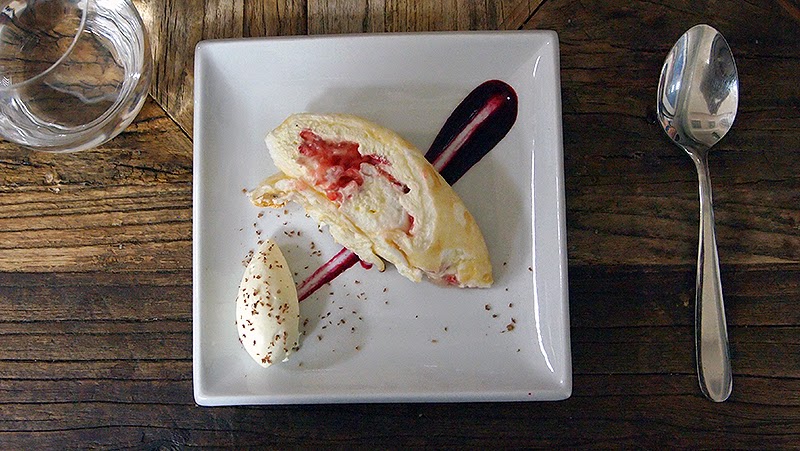
I’ve never been into the whole housewife lifestyle – cleaning and chores aren’t for me. Yet I’ve always enjoyed cooking and baking, which means that I cook 99% of the meals in our household. I do it purely for enjoyment, but of course there are times when I can’t be bothered, or I have run out of recipe ideas. Luckily for me I was contacted by The Underground Cookery School to attend one of their classes, where I would be cooking a 3-course meal (sea bream starter, chicken main, and roulade dessert) with some fellow bloggers and writers. I was eager to learn some new skills, and pick up a few recipes whilst I was at it.
The classes are literally held underground, in the basement of a rather unsuspecting building. Walking into the school I was impressed at the clean cut look of the kitchen and the large, inviting dining table. There were some familiar faces in attendance, and some lovely new ones also. We were all handed a glass of prosecco, canapés and an apron – a brief summary of what to expect from the night. After catching up with everyone we were handed our first task for the night – shelling broad beans. It may not sound very glamorous, but in the kitchen everyone has to chip in! Soon after we were split into two groups to start on the Strawberry Meringue Roulade. Luckily Ashleigh-Jayne was in my group – a self-confessed meringue connoisseur. After prepping our meringue we moved onto filleting our fish and preparing our chicken. Now I’d never done either of these things before, but as a sometimes meat-eater I think it’s important to be more hands on with your food, and understand how it is prepared. So I got stuck in, with a lot more enthusiasm than you’d expect from someone who was just handed a dead fish/whole chicken. I won’t go into details as I know some of my readers will be veggie/vegan etc. and I don’t want to cause any upset. After we’d washed our hands (very thoroughly) we went back to our meringue and prepared our cream, which we then smothered on top of the meringue and covered with strawberries, before carefully rolling to complete our roulade.
The cooking part of the class may have been fun, but the real entertainment came when we sat down to eat! My favourite dish of the night had to be the sea bream, with the roulade coming a close second. In fact they were all delicious! We were served by the chefs, and were given a complimentary wine to go with our courses. Conversation flowed, alongside the wine, thanks to the lovely company I shared. Food is fun, but it’s really made by the company you share it with. So a big shout-out goes to Lily, Charlie, Jesse, Lucy, Cassie and Plum! Also, thank you to Anneliese for hosting us, and the wonderful chefs of The Underground Cookery School. I had a night to remember, and I will certainly be trying out some of the skills I learnt, in my own kitchen!
Find out more at The Underground Cookery School.
Introducing Vivid Drinks: A Matcha a Day…
Workshop: Take Better Instagram Photos, with Jess Macdonald & Cath Kidston!
A Guide to Learning Japanese
My Background
Like most people in the British school system I started by learning French. I then went on to learn Spanish for a short while, before I became interested in Japanese. I mention this as I think having a general interest and background in languages can be very beneficial when it comes to learning a new language. Of course you don’t need to have one, but it helps. I started teaching myself Japanese with phrase books and CDs. I learnt some simple kanji/voacbulary and was able to have short conversations about the weather and my likes/dislikes, which as you can imagine was incredibly useful…not. I then decided that I wanted to study either French or Japanese at university (as my tutors had told me Philosophy wasn’t taken seriously by employers) and I eventually chose Japanese as I believed it would give me an advantage. So I went to university to study Japanese, and when I arrived it was then that I learnt that I knew nothing. Sure my tutors were impressed that I could introduce myself correctly etc. but ultimately I was starting from scratch, like everyone else in my class. Even my tutor informed us all that “[you] will not finish this course fluent, and will never be fluent unless you live in Japan for the rest of your life”. Harsh, but true. I studied Japanese at university in England for 3 years, and studied at a university in Japan for 1 year. I am not fluent in the language but I am competent and confident in what I do know.
Hints & Tips for Learning Japanese
Find your own style of learning: This may seem like a bit of a cope out, but in the age of programs such as Rosetta Stone I think it’s a very important lesson to remember. Sure programs and set plans can be helpful, but if they don’t suit your style of learning then you’re not going to get very far. Which leads to…
Learn Your Strengths & Weaknesses: For example, I am more of a visual person so I watched Japanese TV dramas, which helped me pick up key words and phrases. My weakness is memorising the ton of kanji out there, so I worked with programs that would allow me to go over it and remembered them by creating links in my head (e.g. Like/Love 好き is made up of woman and child, because a woman 女 loves her child 子). It’s different for everyone, but if you can figure out your strengths/weaknesses then learning the language will be a lot easier.
Don’t be scared of textbooks! Some people avoid textbooks as they only see them as utensils for students, and not for those who want to learn language as a hobby/on the side. Sure textbooks can seem quite intimidating but they can be your best friend too! Learning from a textbook from home means you’re not restricted to lesson plans and that you can take your time, and go over sections as many times as you want. In the same vein, you can create goals and plans for yourself using a textbook.
Do set yourself reasonable goals! Don’t expect too much from yourself: It’s easy to become your own worst enemy when learning a language. You can end up expecting too much of yourself, which can be detrimental to progressing. Remember that you can only do so much. Setting yourself goals is a great way of seeing your progress firsthand, and it also means you can pat yourself on the back every time you reach one. Go at your own speed, and realise that you can’t be an expert straightaway.
The Best Resources for Learning Japanese (according to me)
Minna no Nihongo Book 1 (Grammar) & Minna no Nihongo Book 1 (Exercises) [Japan Centre] This series of books are the ones that got me through university, and the first two in the series (that I have mentioned here) are my number one recommendation for those who are beginning to learn the Japanese language. I first worked with Genki, but then my university switched to these (also) as they’re used by most universities teaching the language. In my opinion these books explain the grammar in a way that most people will be able to understand and pick up easily, which other textbooks don’t. Each chapter in MnN gives you a new set of vocabulary and grammar to practise and remember. If you’re a beginner you will probably want to purchase both, so you can complete the exercises (answer booklet is included). They cost around £25 each, but are definitely worth investing in!
Basic Kanji Book Vol.1 [Japan Centre] This is another textbook but this one focuses purely on learning the Chinese characters that make up the Japanese language – kanji. It teaches you the stroke order of the kanji and it also acts as a vocabulary learning device too, as each kanji comes with a set of corresponding words for you to recall. It’s been said that you need to know around 1,000 kanji to be able to read a Japanese newspaper and get by in Japanese society. This book is my personal favourite for learning kanji, and is the one favoured by most UK universities, but don’t let that intimidate you as it is super easy to use. Again this one retails at around £20 but is all you need to get started on your kanji revision.
Anki [Download here] Now this isn’t a textbook, it’s actually a computer flashcard program. You can create your own ‘decks’ of flashcards or you can download someone else’s (there’s a lot out there) to help you revise. It has a great system in that it determines how often you need to revise a particular word or character by your response. For example, I used it to create my own decks from ‘Basic Kanji Book’ and would revise the stroke order and vocabulary. I would always get simple kanji such as 日 so after a while Anki decided that I didn’t need to revise that particular one for several months. More complicated kanji such as 織り I would have to do every day. This is a free program and is a great alternative to having 100s of paper flashcards scattered across your desk.
Tae Kim’s Learning Japanese Grammar App [iPhone or iPad/Android] Tae Kim has created a free app that is simple but incredibly helpful. It’s basically a mini textbook on your phone! It teaches you the basics of Japanese grammar, essential grammar, special expressions, advanced grammar and more! A lot of work has gone into this little app, and it may not look like much but it’s an amazing guide for anyone who is beginning to learn Japanese, or for someone who would like an alternative to their textbooks etc.
Imiwa? [iPhone/iPad only] Imiwa is a free Japanese dictionary available for iOS. You can search for words in English or Japanese and it will show you the corresponding results, along with their kanji (if applicable) and some example sentences. You can also practise your kanji on here, and it will show you the stroke order as well as the readings and example sentences. You can also use the app to search by radicals (these are broken down parts of the kanji) for a kanji that you may not know. This is incredibly helpful if you’re reading a magazine etc. and don’t know the reading of a kanji. This app also lists all of the vocabulary and kanji that you need for the JLPT (Japanese language proficiency test). You can save words, analyse them, make notes and even backup your lists. In my opinion this is best free Japanese language dictionary available on the app store, and even rivals some of the non-free dictionaries.
Japanese Language Buddy Unfortunately you can’t buy or download one of these, instead you’ll have to do some research of your own into pairing with a Japanese language buddy. Learning grammar and revising kanji is all well and good, but if you don’t have someone to converse with then it can seem a bit pointless. Some cities will have language group meet ups, such as the London Japanese Language Meetup. Private tutors (I hired one when I was living in Norwich) are also an option, but they can be expensive. It may be worth meeting with one once or twice a month if you can afford it though as most tutors are native speakers. However I think the best way to practise your Japanese is to make friends with someone and go from there. People often put up ads on the internet for Japanese language exchange with a native speaker (such as Gumtree) or vice versa, and you could even place your own. Remember it works both ways though, help your Japanese language buddy practise their English (if they’re not already fluent) too!
To conclude…
You never really stop learning a language, and there will always be room for improvement. Japanese is not an easy language to learn by yourself, but remember, you are not alone! There are tons of resources, books and people out there who want to help you! Just keep at it and do your best! 頑張ります!
House of Cuckoo at Taylor Taylor London
- Newer Posts
- 1
- …
- 7
- 8
- 9
- 10
- 11
- 12
- 13
- …
- 18
- Older Posts


























